The SLF's image archive is being digitised. In the process, archivists are uncovering some fascinating historical photos from the first decades of the institute's history – and even earlier.
WSL archivist Thomas Reich puts on cotton gloves and carefully picks up a glass plate. It contains a negative dating from 1913, showing students from the University of Tübingen and professors standing in front of a building. Reich delicately cleans the plate, photographs the negative and processes the image. WSL has converted its air-raid shelter into a small photographic studio specifically for this work.
Just as well, because there are thousands more pictures like this one. In January, Reich and his colleague Zeljka Vulovic transported crates of material from the SLF's Davos site to their workshop at WSL. They want to digitise the historical images and preserve them for posterity.
"It's a race against time," says Vulovic. A negative has a life span of around 70 years, and many in the SLF archive are already older than that. What's more, neither institute has the cool, dry spaces ideally needed to store them. "That would allow us to slow down the deterioration, but the knowledge could soon be lost anyway," warns Vulovic.







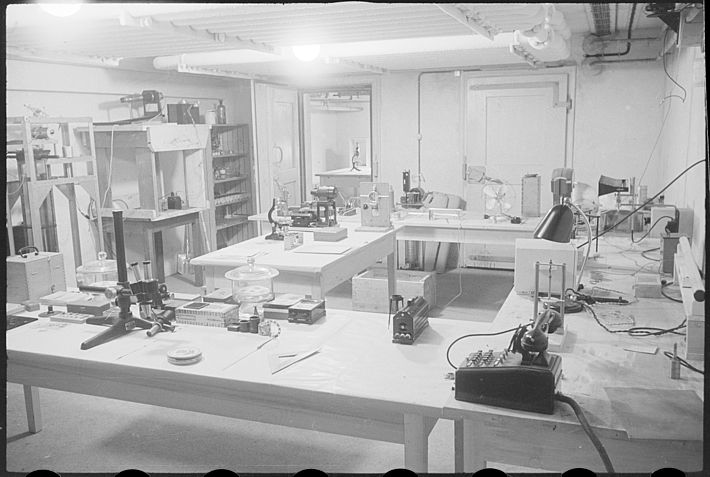
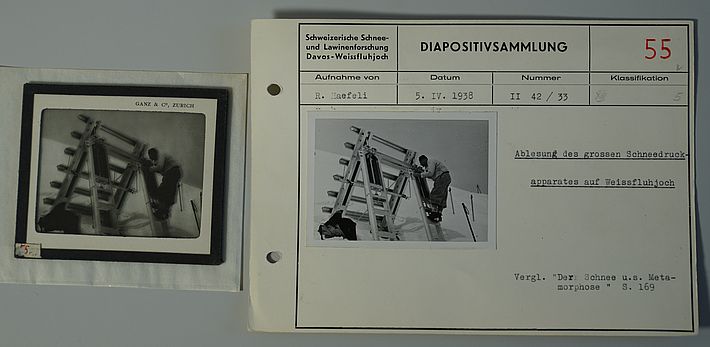
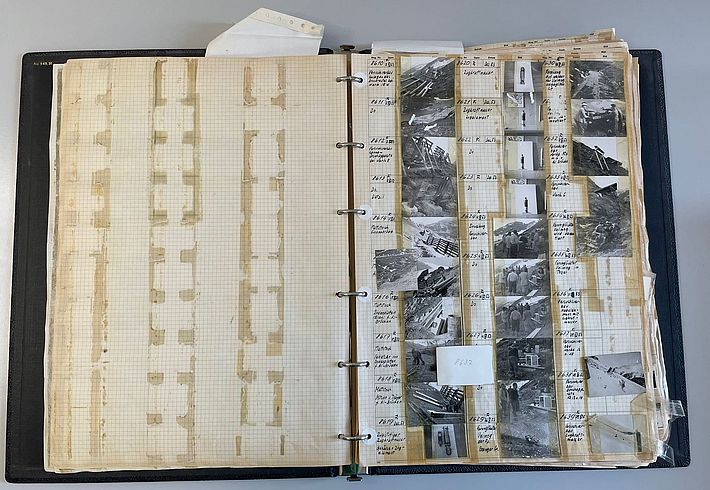
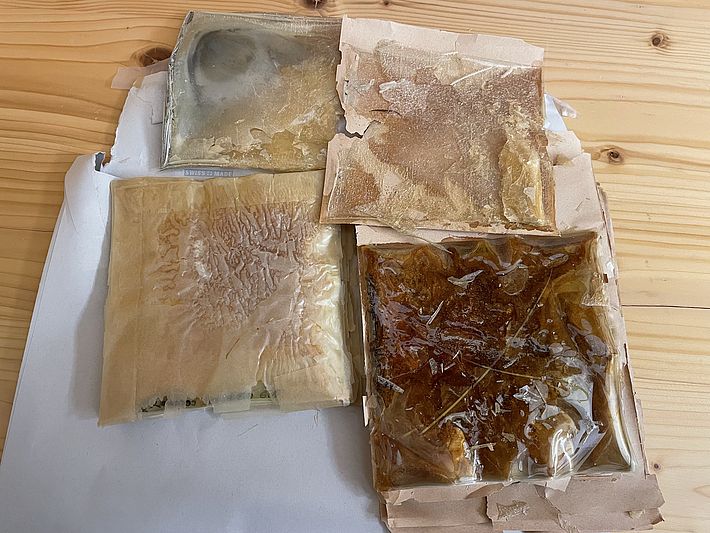
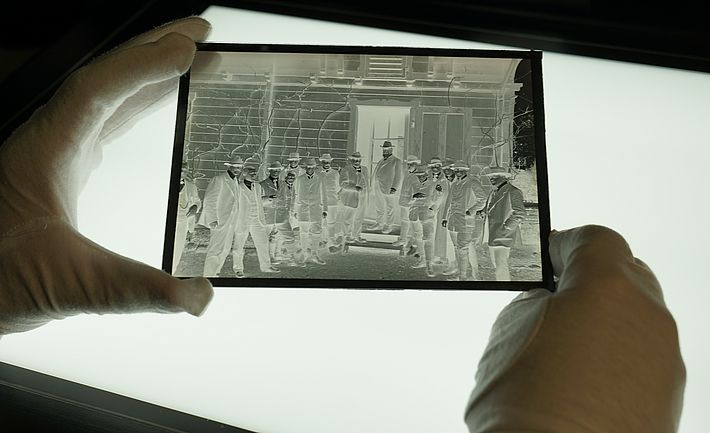
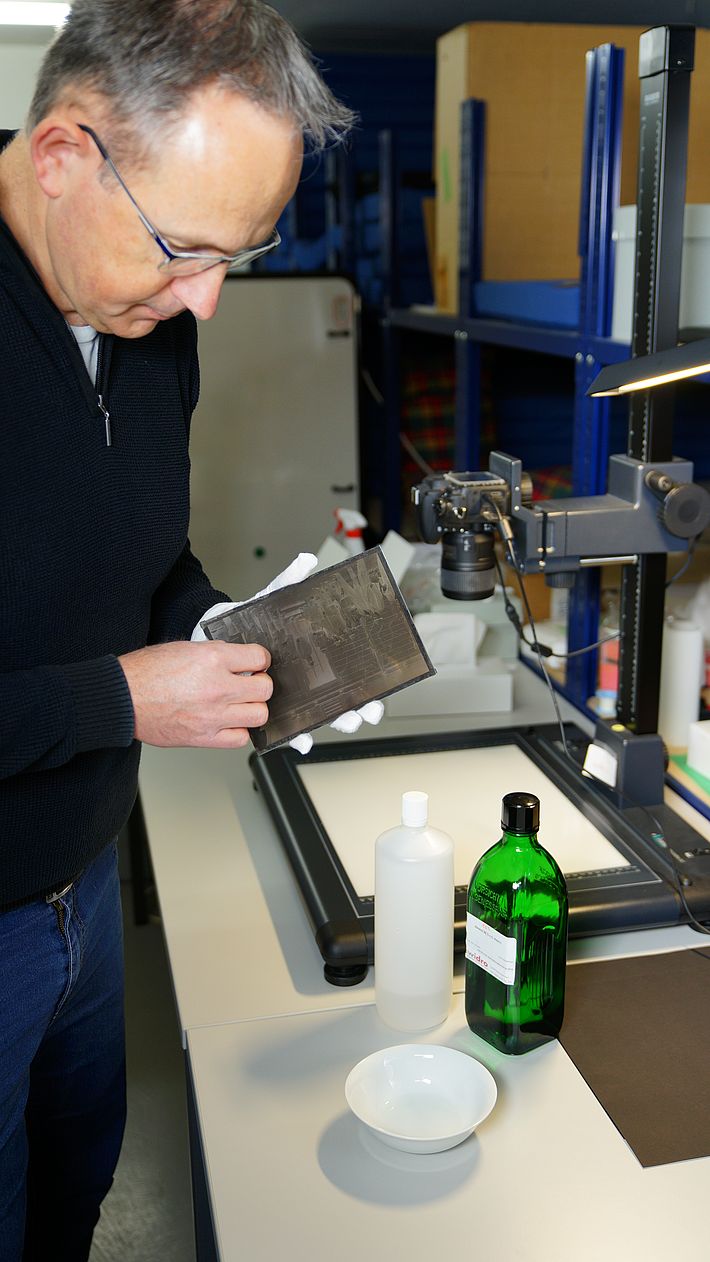
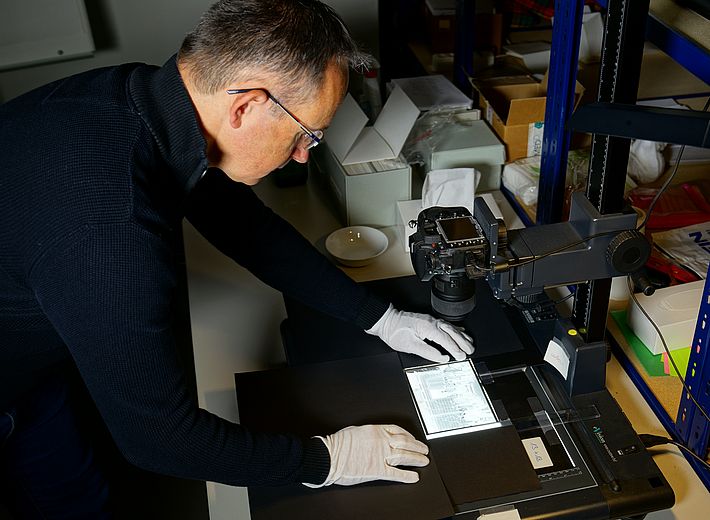
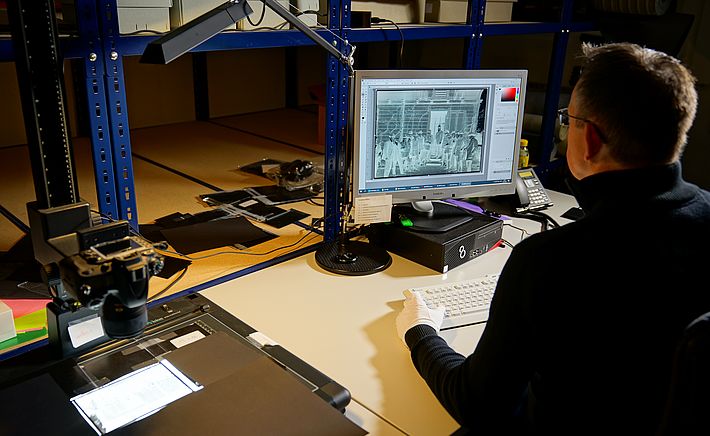
This was already happening with the foul-smelling boxes they came across in the basement of the WSL building in Birmensdorf. Inside, they found aerial shots of glaciers from the late 1950s, which had already started to decompose. In a bid to salvage as much as possible, these images were sent to the glaciologists and the Image Archive at ETH Zurich.
For the time being, two collections have been transferred from Davos to Birmensdorf. One is the SLF's first collection containing photos from the 1930s to the 1950s, including many from before 1942, the year when the institute was founded. "The collection has got into a real mess over the decades," laments Vulovic. The contents of the pictures are logged on thousands of index cards, but finding the original images they relate to is a painstaking and laborious task. Some are scattered in random boxes, while others don't match the description on the card. The images cover a range of subjects, from notable individuals to work at the institute and in the field, and even avalanches. Vulovic and two student assistants check the cards and images one by one to see which go together and whether the labels are correct. They then record them in a register. "We get through about 30 to 50 cards a day," says Vulovic. An outside company is digitising the images.
The second part of the SLF collection is the legacy of Ernst Eugster, a pioneer of snow studies in Upper Valais and Grisons, who documented his work photographically as far back as the 1930s. He bequeathed to the SLF over 1,000 pictures of avalanche barriers, snow on buildings, snow on trees, snow in avalanches, and people in the snow and mountains. The photographs will be of interest to cultural historians as they show not only the landscape, but also people at work and dressed in typical clothes of the period, such as a man on skis wearing a cap and tie. Eugster noted the subject on the back of each picture. "But his handwriting isn't easy to read," says Vulovic, and the team often has to do some detective work to figure out what he meant.
What's more, these two collections are just the beginning. There are yet more holdings, of both photographs and films, sitting in the SLF's basement – totalling over 100,000 images, Vulovic estimates. She and her assistants will process these collections with a view to making them accessible to the public. Among the insights the latter will glean from them is that people almost a century ago went out mountaineering with ropes, as they do now, but dressed in ordinary suits and hats rather than the specialist clothing we have today.
Contact
Project
Copyright
WSL and SLF provide the artwork for imaging of press articles relating to this media release for free. Transferring and saving the images in image databases and saving of images by third parties is not allowed.
